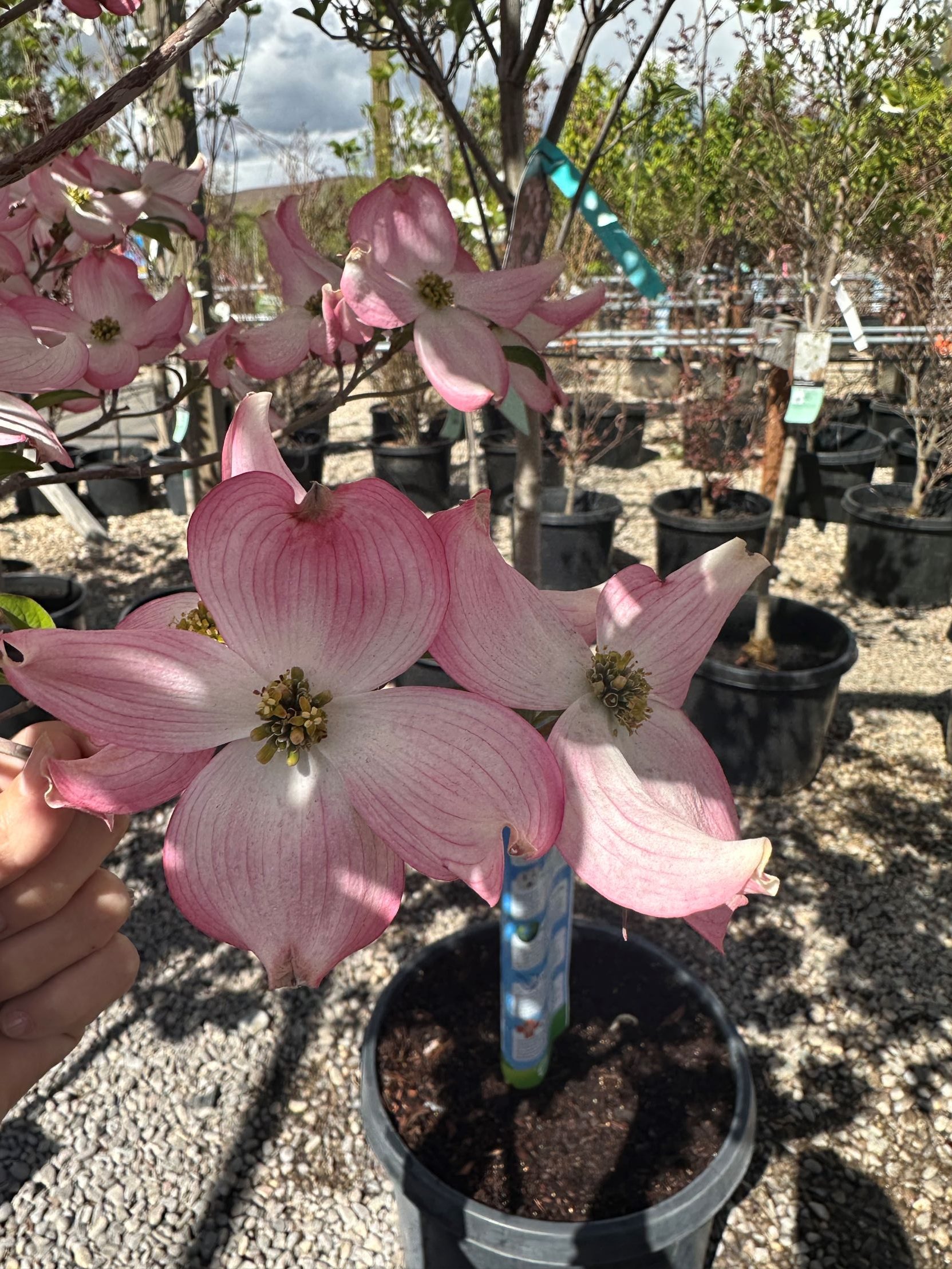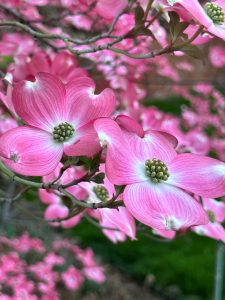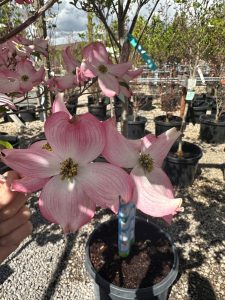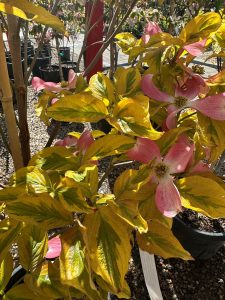
Flowering Dogwood Trees for Boise
February 18, 2025 | News

Are you looking to brighten up and add a little height to an afternoon shade portion of your landscape? Those areas that get morning sunshine until 12 or 1 pm with well draining soil are an excellent option for a shade tolerant dogwood tree. Dogwood trees have beautiful bracts or leaflets that can range in color from creamy ivory, light pink or even a warmer pink. These bracts that look like flowers from a distance, emerge in Boise’s spring time- late March into May. Dogwoods grow as understory trees enjoying quite a bit of shade from larger trees in the eastern united states.

Some of the creamy white varieties of dogwood are: Cloud Nine (15’x20′), Eddie’s White Wonder or Venus (25’x20′), Appalachian Mist (20’x15′), Wolf Eyes (8’x8′), June Snow (30’x30′). Pink flowering varieties: Prairie Pink (20’x20′), Pink Flowering (20’x20′) and the deeper pinks: Cherokee Sunset (12’x12′ with gold foliage) or Cherokee Brave (25’x20′).
We highly recommend well draining soil for dogwood trees, as they don’t like soggy roots. Plan to use acid planting mix or G&B soil building conditioner with your existing native soil. The Treasure Valley’s clay soil can retain too much moisture for most plants, so amending our native soil can help plants flourish.

When planting your dogwood tree, dig your hole as deep as the tree is in the pot and twice as wide as the pot. Make sure the top of the root ball is level with the soil surface. We add water to the hole & let it drain before adding the tree along with enough amended soil to cover the root ball. Remove the tie & the burlap that rests on the dogwood tree trunk. We trim the excess burlap that was resting along the trunk, leaving all other burlap alone as it will decompose underground. (This burlap holds the tree’s root ball together, so leave it wrapped around the root ball, keeping your new tree’s roots intact.)
Fertilizing your dogwood tree- at planting: use fertilome root stimulator at planting time, if you forget, you can pour it over the top of the soil after planting. Espoma soil acidifier or hi yield soil sulfur can be applied the 2nd spring your tree is in ground, this can be helpful in keeping your soil more acidic and keep some color in your tree’s spring bracts. You can fertilize your newly planted tree the second year with: Espoma slow release tree tone, Dr. Earth all purpose or Fertilome tree & shrub, following the package directions. Water your fertilizer in with a hose or with your sprinkler system.
Remember to get outside & enjoy the beauty of your dogwood tree spring thru fall, it truly is a lovely addition to a dappled light garden.